In this post, I will cover the Best Crypto Bridges Supporting Ethereum, Polygon, Solana. Crypto Bridges allow fast, inexpensive, and secure, crypto cross-chain transactions.
Bridges are vital for passing coins, NFTs, and other data between different blockchains. They link Ethereum, Polygon, and Solana ecosystems helping users and developers
optimize liquidity through ease-of-use DeFi participation, multi-chain swaps, and flexible liquidity management.
Key Points & Best Crypto Bridges Supporting Ethereum, Polygon, Solana
| Bridge Name | Key Features |
|---|---|
| Portal (Wormhole) | Supports Ethereum, Solana, BNB Chain, and more; fast transfers; NFT bridging |
| Synapse Protocol | Cross-chain swaps; supports Ethereum, Polygon, BNB, Avalanche, and more |
| Allbridge | Connects EVM and non-EVM chains; supports Solana, Ethereum, Polygon |
| Multichain (Anyswap) | Broad chain support; fast and secure; supports Ethereum, Polygon, Solana |
| Celer cBridge | Low-cost, fast transfers; supports Ethereum, Polygon, BNB, and others |
| deBridge | Cross-chain messaging and asset transfers; supports Ethereum, Polygon |
| LI.FI | Aggregates multiple bridges; supports Ethereum, Polygon, Solana, and more |
| LayerZero | Omnichain interoperability; supports Ethereum, Polygon, Solana |
| Across Protocol | Optimized for Ethereum L2s; fast and low-cost bridging |
| Rango Exchange | Multi-chain DEX aggregator; supports Ethereum, Polygon, Solana, Cosmos chains |
10 Best Crypto Bridges Supporting Ethereum, Polygon, Solana
1. Portal (Wormhole)
Portal is a multi-chain bridge that connects Ethereum, Solana, and other top tier blockchains. It permits the interchain transfer of tokens and NFTs without the involvement of a centralized entity.
Wormhole uses a security and transaction verification model that includes a decentralized network of guardians.
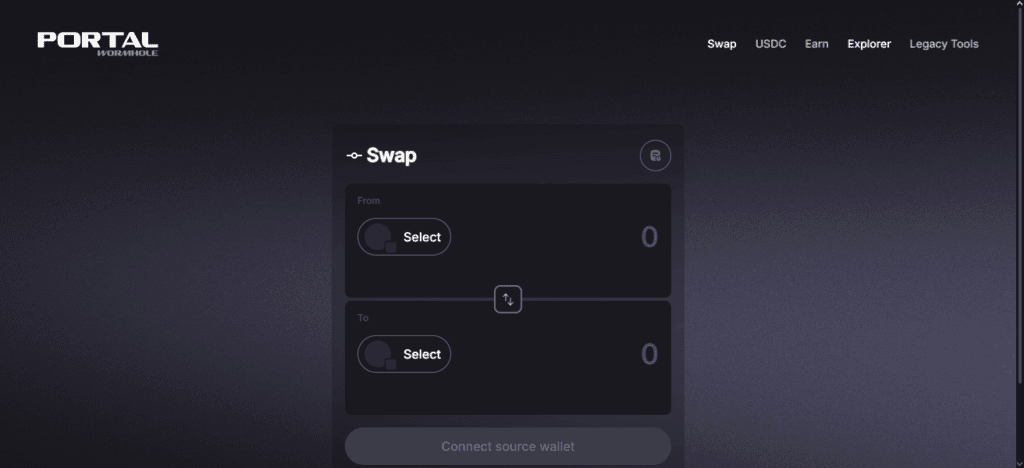
For assets on Solana, Wormhole is highly competitive, delivering transfers that have minimal costs and complete transfers at the most rapid speeds.
It connects with a number of dApps in order to provide cross-chain features in DeFi, inter-chain NFTs, and liquid cross-chain swaps. Community feedback is responsive and allows quick iterations for improvements.
Pros And Cons Portal (Wormhole)
Pros:
- Supports multiple chains including Ethereum, Solana, and BSC, offering wide interoperability.
- Fast and low-cost transfers, especially on Solana.
- Enables NFT and token bridging across ecosystems.
- Decentralized network of guardians improves security and transparency.
Cons:
- Past security incidents have highlighted vulnerability risks.
- Complex for beginners unfamiliar with multi-chain operations.
- Network congestion on Ethereum can increase fees.
- Limited support for smaller or newer chains.
2. Synapse Protocol
The Synapse Protocol is one of the most advanced and versatile cross-chain bridges offering fast and secure token transfers between Ethereum, Polygon, and Solana, to name a few.
Synapse employs a liquidity pool framework, enabling instant swaps, and the service does not need a centralized custodian.
Synapse values user protection and minimizes hacking risks via multi-signature governance and audits.
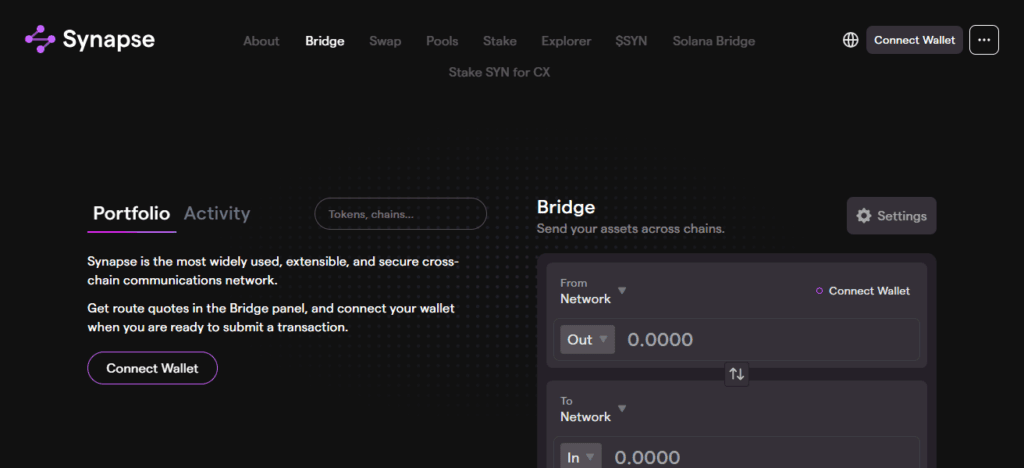
In addition to bridging, Synapse supports DeFi-compatible cross-chain swaps and cross-chain lending. Synapse merges a growing ecosystem with lower gas fees, thus optimizing for cost and future cross-chain expansion.
Its bridge ecosystem now supports new blockchains, NFTs, layer-2s, and other future technologies.
Pros And Cons Synapse Protocol
Pros:
- Near-instant cross-chain transfers using liquidity pools.
- Multi-chain support including Ethereum, Polygon, and Solana.
- Audited smart contracts ensure high security.
- Low-cost transactions with efficient gas usage.
Cons:
- Liquidity-dependent, transfers may be slower during low liquidity periods.
- Less established than some older bridges like Wormhole.
- Limited NFT bridging capabilities.
- User interface may feel complex for new users.
3. Allbridge
Allbridge serves as a dependable multi-chain bridge spanning Ethereum, Polygon, Solana, and multiple other blockchains.
Allbridge enables quick and safe token movement, and users appreciate its engineering and design for low-cost transfers.
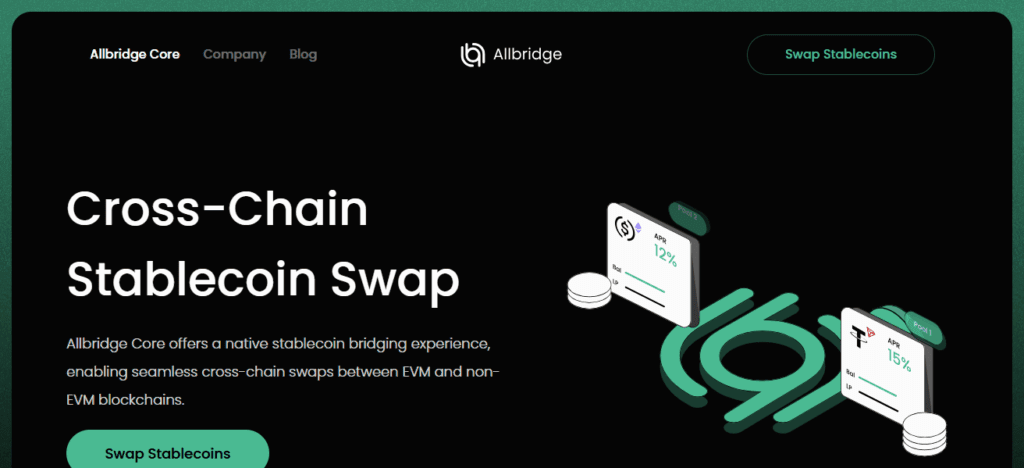
Smart contracts ensure complete system check audits for decentralized safety. Allbridge offers a simple design well-suited for novice and advanced users of decentralized finance (DeFi). Allbridge facilitates inter-chain cross-staking and cross-yield optimizing.
It is connected with DeFi, cross NFT, and other market inter-operability. Allbridge offers consistent developments and connections with other blockchains, making it a secured option for users searching for easy and multi-chain token bridge transfers.
Pros And Cons Allbridge
Pros:
- User-friendly interface for beginners.
- Supports Ethereum, Polygon, Solana, and several other chains.
- Secure smart contract-based transfers.
- Compatible with DeFi and NFT projects.
Cons:
- Bridge fees can be higher than some alternatives.
- Occasional delays during high network congestion.
- Limited advanced features for professional traders.
- Smaller ecosystem compared to aggregators like LI.FI.
4. Multichain (Anyswap)
Rebranded from Anyswap, Multichain is an industry leader in cross-chain blockchain technology. Its current chain connections include Ethereum, Solana, and Polygon, and over 30 other chains.
Users experience ease of asset transfers and high liquidity for asset swaps. Multichain’s decentralization of security is provided through a network of Validators. This obfuscates the underlying transaction vulnerabilities.
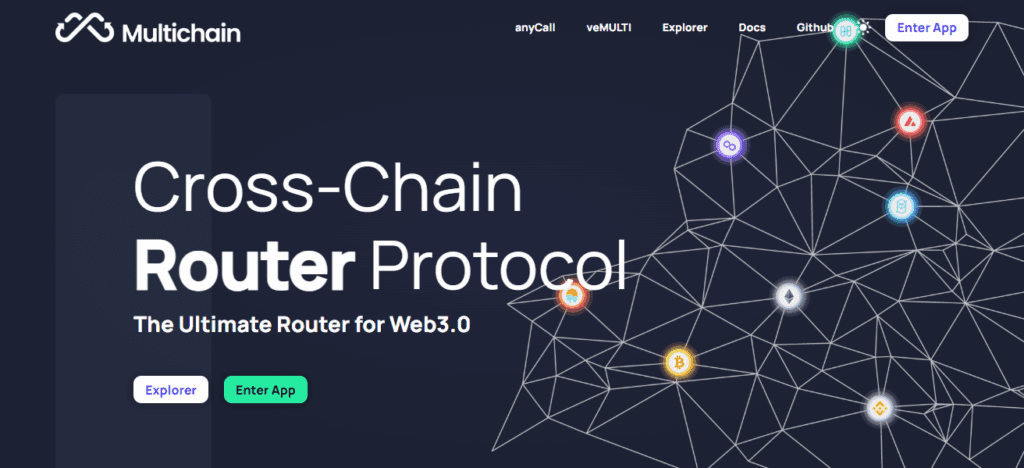
The technology supports an extended range of token standards including ERC-20 and SPL, and is therefore applicable in both DeFi and NFTs. Multichain’s incorporation in dApps enables cross-chain staking, lending, and yield farming.
Ongoing improvements and community engagement have built Multichain’s reputation as one of the best bridges in the crypto space.
Multichain (Anyswap)
Pros:
- Extensive chain support, including over 30 networks.
- Decentralized validators enhance security.
- Supports ERC-20, SPL, and other token standards.
- Integrates with DeFi apps for staking, lending, and yield farming.
Cons:
- Interface can be overwhelming for beginners.
- Cross-chain swaps may have higher slippage on smaller tokens.
- Past audits have shown minor vulnerabilities.
- Some operations require multiple confirmations, causing slight delays.
5. Celer cBridge
Celer cBridge is another bridge-for-use cross-chaining. It can cross chain Ethereum, Polygon, Solana, and multiple layer-2. It is also built for DeFi users and is built to have fast and cheap transfers. cBridge off-chain and on-chain contracts to minimize risks.
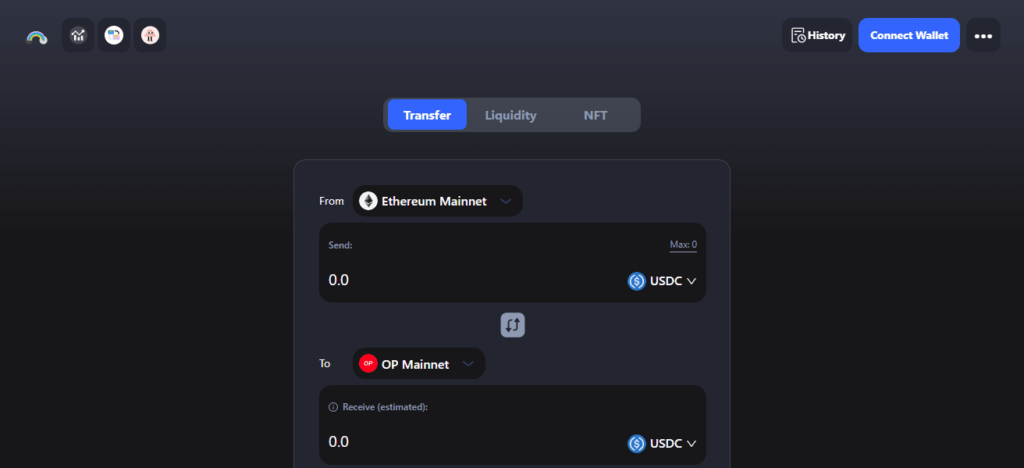
Users can transfer coins or tokens on and off the chain. Furthermore, Celer added the ability to transfer different assets and made it so users have less slippage and lower costs when swaping.
Their systems are built for cross-chain DeFi applications. cBridge is highly Flexable, secure and fast that makes it top choice in the increasing multi-chaining environment.
Pros And Cons Celer cBridge
Pros:
- Very fast and low-cost cross-chain transfers.
- Supports Ethereum, Polygon, Solana, and multiple L2 networks.
- Off-chain state verification ensures secure transactions.
- Optimized liquidity routing reduces slippage.
Cons:
- Limited NFT support compared to Wormhole.
- May require advanced knowledge for complex transfers.
- Smaller token support on less popular chains.
- Reliance on off-chain verification may concern highly security-conscious users.
6. deBridge
deBridge enables secure and decentralized token and data transfers across chains. It employs a network of validators and modular smart contracts to minimize transaction finality and mitigate threats.
deBridge provides accumulated liquidity, allowing users to transfer assets with minimal slippage. It is also liquidity-agnostic and can be used in various activities across DeFi and NFT frameworks.
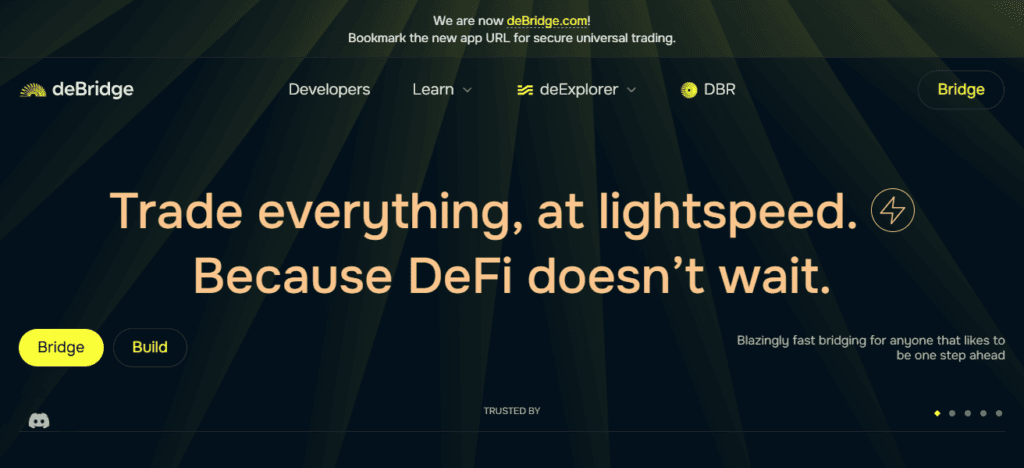
Emphasizing developer-oriented APIs and flexible architecture, deBridge is a bridge for data and application interoperability, in addition to asset transfer.
Pros And Cons deBridge
Pros:
- Secure cross-chain transfers with validator verification.
- Supports Ethereum, Polygon, Solana, and more.
- Offers liquidity aggregation for efficient swaps.
- Developer-friendly APIs for dApp integration.
Cons:
- Less well-known, smaller community support.
- Some bridging operations may experience minor delays.
- Limited educational resources for beginners.
- Complexity increases with multi-step cross-chain operations.
7. LI.FI
LI.FI connects Ethereum, Polygon, Solana and many other chains as cross-chain infrastructure. As a bridge aggregator, LI.FI combines many different protocols into a single interface and allows users to choose the optimal route based on speed, cost, and level of security.
LI.FI allows cross-chain DeFi interactions, tokens transfers and swaps, and offers supports to integrated dApps and DeFi systems for simplified unified APIs allowing seamless multi-chain operations.
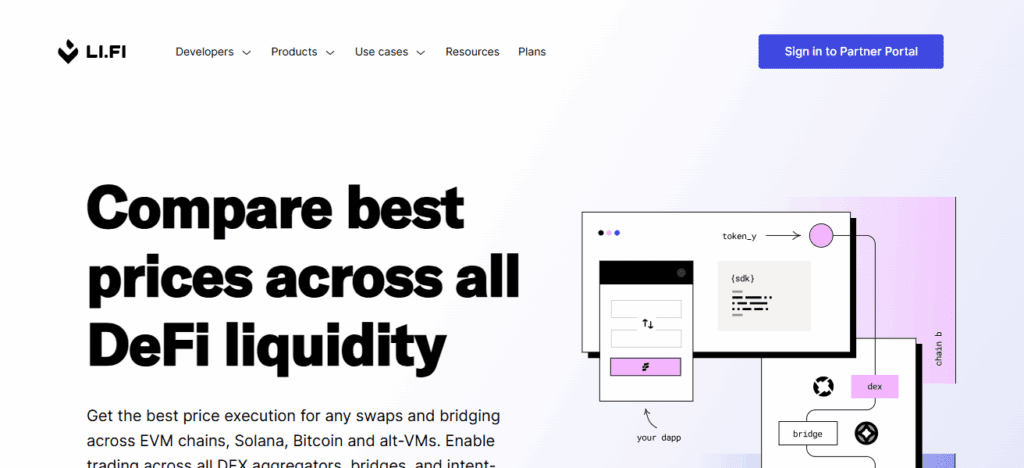
LI.FI provides transparency and mitigated risks through audits and distributed governance. Bridging equity improves liquidity routing and lowered friction. For developers and traders looking for cross-chain complex solutions, LI.FI is a no brainer.
Pros And Cons LI.FI
Pros:
- Aggregates multiple bridges for optimal routes.
- Supports Ethereum, Polygon, Solana, and other major chains.
- Provides fast, cost-efficient transfers.
- Developer-friendly API simplifies dApp integrations.
Cons:
- Relatively new, smaller adoption compared to legacy bridges.
- Dependent on underlying bridges; if one fails, it affects performance.
- May be confusing for beginners due to multiple route options.
- Limited direct NFT support
8. LayerZero
LayerZero is an omnichain interoperability protocol that connects Ethereum, Polygon, Solana, and other major chains through a unique message-passing framework.
LayerZero enables cross-chain interactions on smart contracts unlike traditional bridges which only take care of tokens, opening a whole new world of DeFi opportunities.
LayerZero combines an ultra-light node architecture with oracles and relayers to attain secured, trust-minimized interactions.

LayerZero also offers Bridging tokens, multi-chain liquidity and dApp interoperability to perform cross-chain operations seamlessly.
LayerZero is widely regarded as the foundational protocol for the next generation of multi-chain DeFi ecosystems because of its strong security, reduced cost, and a focus on developers.
Pros And Cons LayerZero
Pros:
- Enables cross-chain smart contract communication, not just token transfers.
- Low fees and high security with ultra-light nodes.
- Supports Ethereum, Polygon, Solana, and more.
- Expands possibilities for multi-chain DeFi and dApps.
Cons:
- More complex setup for developers and new users.
- Focused on contracts; casual token transfers may require additional steps.
- Requires trust in oracles and relayers for security.
- Smaller user interface ecosystem for retail users.
9. Across Protocol
The Across Protocol functions as a specialized cross-chain bridge for Ethereum, Polygon, and other major networks.
It prioritizes speed, security, and gas-efficient transfers of tokens. Across employs a hub-and-spoke system, which reduces transaction delays and keeps a decentralized structure.
For DeFi users needing liquidity, Across is perfect as it supports native token and stablecoin bridging.
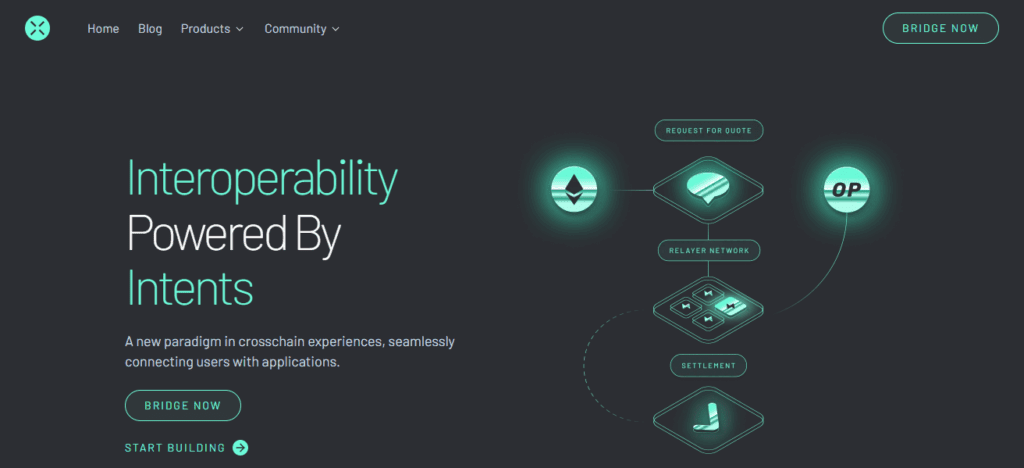
This seamless integration also allows cross-chain DeFi activities such as staking, token swaps, and yield farming.
Future integration is possible due to the modular design. The extensive security audits performed on the system attest to its reliability, which is why Across is positioned to be a competitive and trusted choice for multi-chain crypto transfers.
Pros And Cons Across Protocol
Pros:
- Gas-efficient, fast token transfers.
- Supports Ethereum, Polygon, and other major networks.
- Decentralized and secure smart contract infrastructure.
- Scalable architecture allows future chain integrations.
Cons:
- Limited NFT support.
- Smaller community compared to top bridges.
- Advanced DeFi features require technical knowledge.
- May face temporary delays during network congestion.
10. Rango Exchange
Rango Exchange operates as a cross-chain aggregator that connects Ethereum, Polygon, Solana, and several other networks, and specializes in moving and exchanging tokens with ease.
It combines multiple bridges and assesses the best routes based on time, cost, and liquidity.
Rango facilitates cross-chain DeFi as well, incorporating staking, yield farming, and token swapping into a single ecosystem.
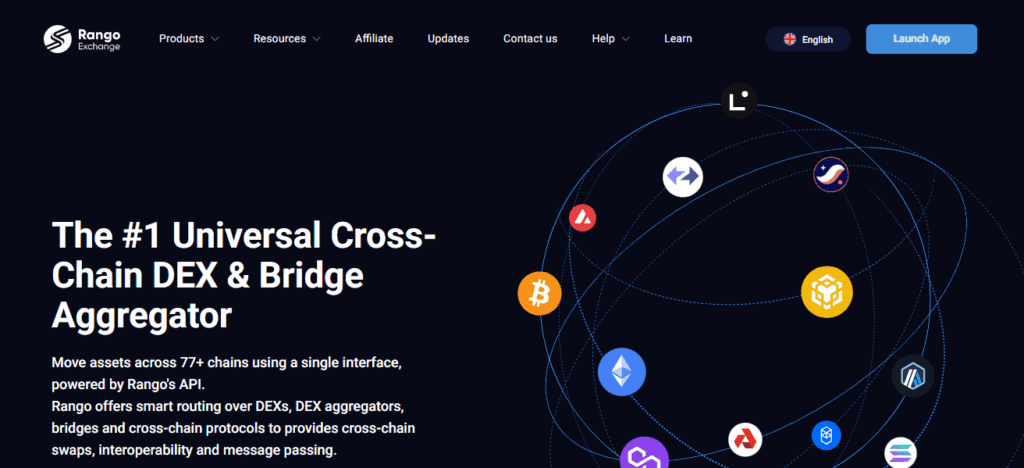
Rango employs best security practices by using the audited smart contracts and decentralized verification methods available. Rango Exchange’s smart user interface is compatible with most wallets, providing Rango with the versatility that users seek.
By serving as both a bridge and a swap, Rango Exchange provides users with efficient management of assets from multiple chains.
Pros And Cons Rango Exchange
Pros:
- Aggregates multiple bridges for optimal speed, fees, and liquidity.
- Supports Ethereum, Polygon, Solana, and more.
- Enables cross-chain swaps, staking, and DeFi participation.
- User-friendly interface suitable for beginners.
Cons:
- Dependent on third-party bridges; failures propagate.
- Fees may vary depending on route selection.
- Smaller track record than established bridges.
- Limited direct NFT bridging support.
Conclusion
In conclusion, crypto bridges, such as Wormhole, Synapse, Allbridge, and LayerZero, provide Ethereum, Polygon, and Solana users safe, rapid, and economical cross-chain transfers.
Each bridge has its own unique benefits—aspects that allow you to deal with NFTs, access DeFi services, or utilize optimized routes—and the appropriate bridge choice will depend
on the user’s particular requirements with regard to rapidity, cost, safety, and the number of blockchains involved to allow efficient transfer of assets and data.
FAQ
A crypto bridge allows transferring tokens, NFTs, or data between different blockchains like Ethereum, Polygon, and Solana.
Bridges enable cross-chain DeFi participation, token swaps, and NFT transfers without leaving your preferred blockchain.
Most bridges use audited smart contracts and decentralized validators, but users should be aware of potential risks.
Celer cBridge, Wormhole, and Synapse Protocol are known for low fees and near-instant transfers.
Yes, Wormhole and some bridges support NFT transfers across Ethereum, Polygon, and Solana.









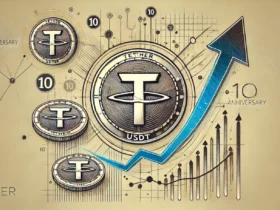
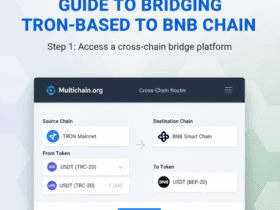



Leave a Reply